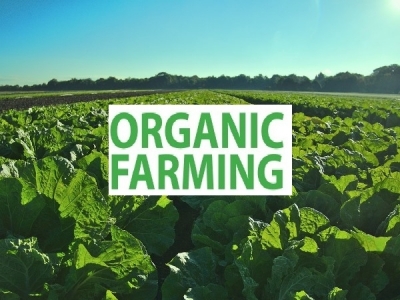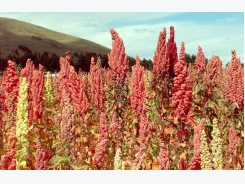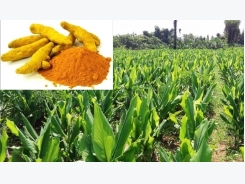Organic Agriculture and Its Importance

The Age of Organic Agriculture:
Agriculture has been a part of human habitation since the earliest days of human settlements. When that initial person chose to sow seeds, it was the first time someone had figured out that seeds could be harvested and then grown for food, and the basis of agriculture, as well as the first farmer, was born.
Organic Agriculture #1: The Basics are Still the Same
From centuries ago to our modern time, the basics of agriculture remained the same. You sow seeds, water and fertilize, weed and then harvest. We now rely on farmers to grow our food for us, rather than growing it ourselves. In fact, farmers are the backbone of the produce industry. Without them, our food would be limited in both quantity and variety. And as we well know, if there is one business that is sure to stand the test of time, it is farming.
Organic Agriculture #2: Modernized Farming
The farming industry boomed in the 20th century, and with it came the realization that if there could be more yield from every plant, a farmer could work the same hours but potentially double their market presence, thereby making more profits for the same amount of work.
Chemical companies pushed artificial fertilizers, soil conditioners, weed and insect killers that would allow a plant to grow quicker, produce more fruits, need less water and be easier to care for. Though this allowed farmers to feed more people with less acreage, while bringing in more profit, the chemicals began to compromise the soil quality. What’s worse, studies began to appear indicating that all of these additives were having a negative effect on wildlife health and ground water, with questions popping up about human health. Were these chemicals effecting us too? Better farming with chemicals was not better after all.
Organic Agriculture #3: The New Age of Organics
In an effort to provide healthier foods and get back to the ways of our forefathers, organic farming began to come back into vogue. By eliminating chemical use the fruit and vegetables from these farms became known as the healthiest and best tasting food you could get. Co-ops and health food stores began to spring up as organic food started to surge in popularity, and today, entire supermarket chains are devoted to organic crops. In fact, whereas 10 to 15 years ago it would difficult or impossible to find an organic section in your favorite food market, now, virtually every food store has at least one aisle filled with organic food stuffs.
Organic Agriculture #4: Leaps and Bounds

Organic Food Production.
The organic market segment is growing by leaps and bounds, and in some places, demand is greater than supply. Recent studies have proven that organic foods are better to consume than food grown from plants that have been chemically aided. As word got out that organic produce was readily available, parents with kids flocked to these stores and are now driving this market higher than ever before. Truth be told, if there ever was an agricultural segment to be involved in right now, organic farming has to be at the top of the list.
Organic Agriculture #5: History Doesn’t Lie
In our early history, all of the agricultural food that humans consumed was 100% organic. It had to be, as fertilizers were made from animal and fish products, while insect and weed control was done by hand with organic weed and insect killing substances.
Up until the 20th century, virtually everything that humans consumed was 100% organic. All of the familiar meats that we know, from beef, pork, and chicken, were raised on plant feed from completely natural farm fields, and all fish was live caught from the oceans or inland lakes.
Crops were grown and tilled with horse-powered equipment, and even the plants that were picked and discarded were used as mulch and fertilizer for the next batch of plantings. Literally nothing went to waste and it was sustainable agriculture at its best.
Organic Agriculture #6: Higher Cost
One of the biggest issues with organic food production has been the high labor cost involved. Since everything has generally been done by hand, or with horse-drawn machines, organic fruits and vegetables have usually cost more at the market than similarly grown commercially farmed goods. Granted, there is no doubt that organics are better and more nutritious, but when it comes to stretching out the food dollar every month, it’s tough to beat the lower prices of commercial farming.
Organic Agriculture #7: Modern Technology
Higher labor hours have always been one of the largest drawbacks to organic food production. It’s one thing to grow an organic garden and supply enough food for a small family, but it is completely another thing to grow enough food to make it as a business. A small garden may require a few hours each week for weeding, feeding, mulching and fertilizing, but when it comes to doing it on a commercial scale, like say several hundred acres, the labor cost alone becomes the single biggest factor.
However, with the newest designs in agricultural equipment, organic farming is quickly becoming as cost effective as commercial farming. This modern technology is shaving off hundreds of hours of labor per month, which ultimately means more organic crops getting to market in less time than ever before. Without modern machinery, organic farming just cannot compete.
As this trend continues, customers may soon have a choice of buying organic food at roughly the same price as commercially farmed food, while stores will be able to devote more shelf space to organics. This scenario, for the farmer and customer, is slowly coming true as more and more modern technology takes the place of hands in the fields.
In essence, we have gone full circle and are, once again, embracing the organic lifestyle of food growing and eating. With modern agricultural machinery, like the types found at Casella Macchine Agricole leading the way, organic food for the farmer can be just as profitable, take less time planting and harvesting, while providing a good income for the farmer and their family. It is once again the age of organic agriculture, and that’s a win-win situation for everyone.
Related news
Tools

Phối trộn thức ăn chăn nuôi

Pha dung dịch thủy canh

Định mức cho tôm ăn

Phối trộn phân bón NPK

Xác định tỷ lệ tôm sống

Chuyển đổi đơn vị phân bón

Xác định công suất sục khí

Chuyển đổi đơn vị tôm

Tính diện tích nhà kính

Tính thể tích ao




 Black Pepper Cultivation Information Guide
Black Pepper Cultivation Information Guide  Turmeric Cultivation Information Guide
Turmeric Cultivation Information Guide